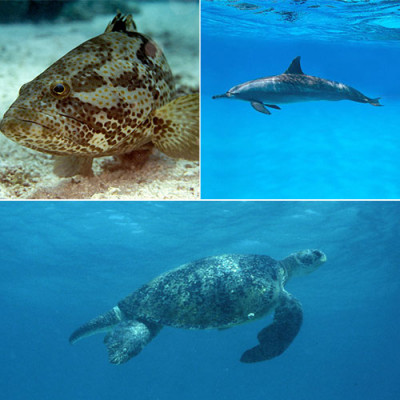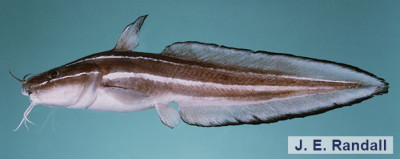Name: Striped Eel Catfish
Local name: Eyi
Scientific name: Plotosus lineatus
Classification: Class: ray-finned fishes; Order: catfishes; Family: eel catfishes (Plotosidae)
Synonym: Plotosus anguillaris, Paraplotosus albilabris
Size: The Striped Eel Catfish commonly grows to 25 cm, and may attain a maximum total length of 32 cm.
Habitat:
This coastal, demersal species is the only catfish occurring in coral assemblages, but it is also found on open coasts and in tide pools. Juveniles form dense ball-shaped schools of some 100 individuals, while adults are solitary or occur in small groups. They feed on crustaceans, mollusks, worms, and fish. The Striped Eel Catfish lays eggs near the bottom and larvae are planktonic. It must be considered very dangerous, because of its venomous, serrate spines. The venom can be fatal to humans.
Distribution:
: It is widespread in the tropical and subtropical Indo-Pacific, from the Red Sea and East Africa to Micronesia and Samoa, north to southern Japan and Korea, and south to Australia.
Conservation status:
The Striped Eel Catfish has not yet been assessed globally by the IUCN Red List of Threatened Species. In a recent regional assessment for the Arabian Gulf it was classified as Least Concern (LC). It may be caught in seines and on hook-and-line, but is not widely used in Qatar.
Description:
The second dorsal fin of this species is continuous with the caudal and anal fins. It has four pairs of mouth barbels, and a highly venomous spine at the origin of the first dorsal fin and at each pectoral fin. The body is brown dorsally and laterally (very dark brown in juveniles), with two narrow, white to pale yellow stripes. The ventral parts of the head and body are white, and the margins of the second dorsal and anal fins are black.








